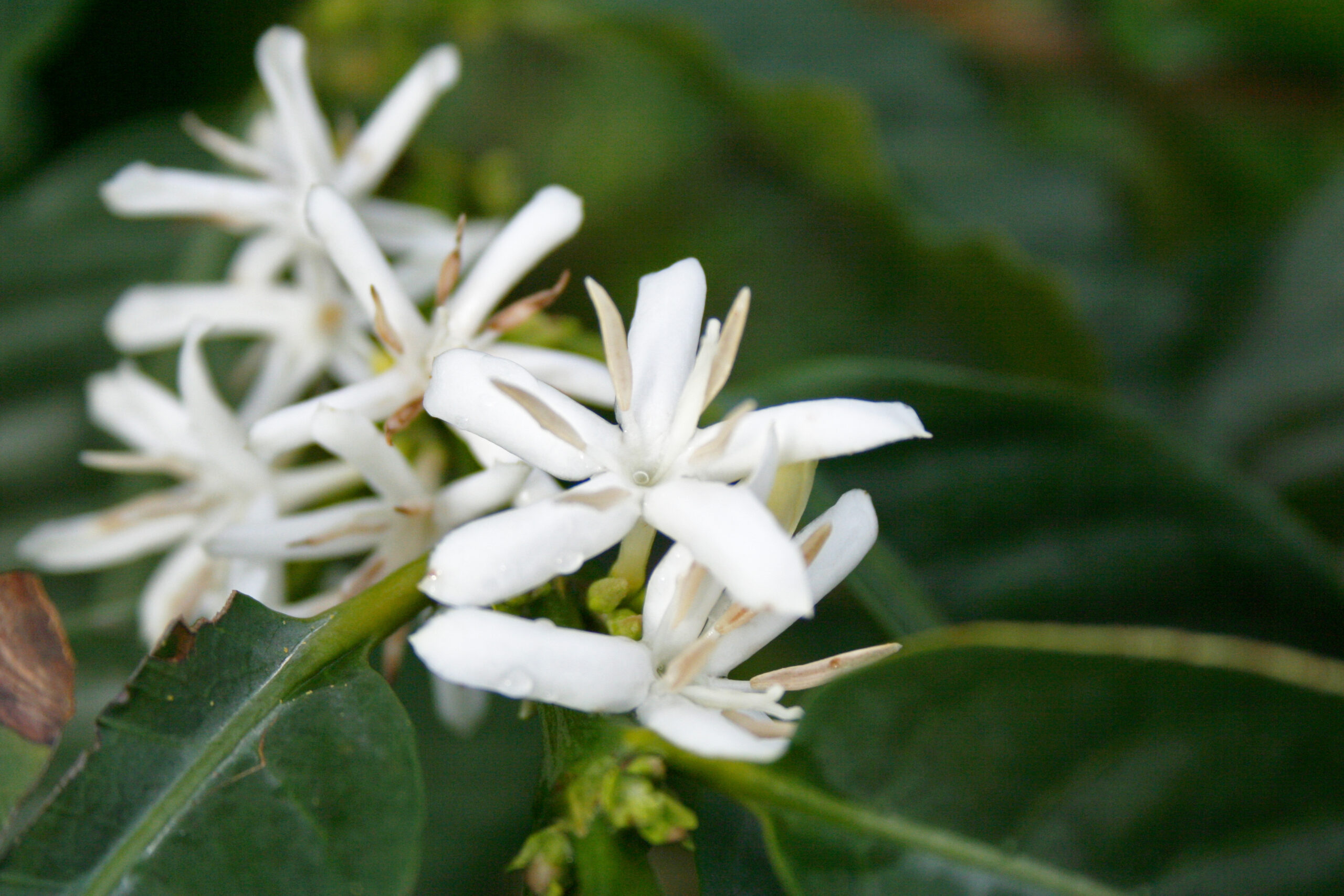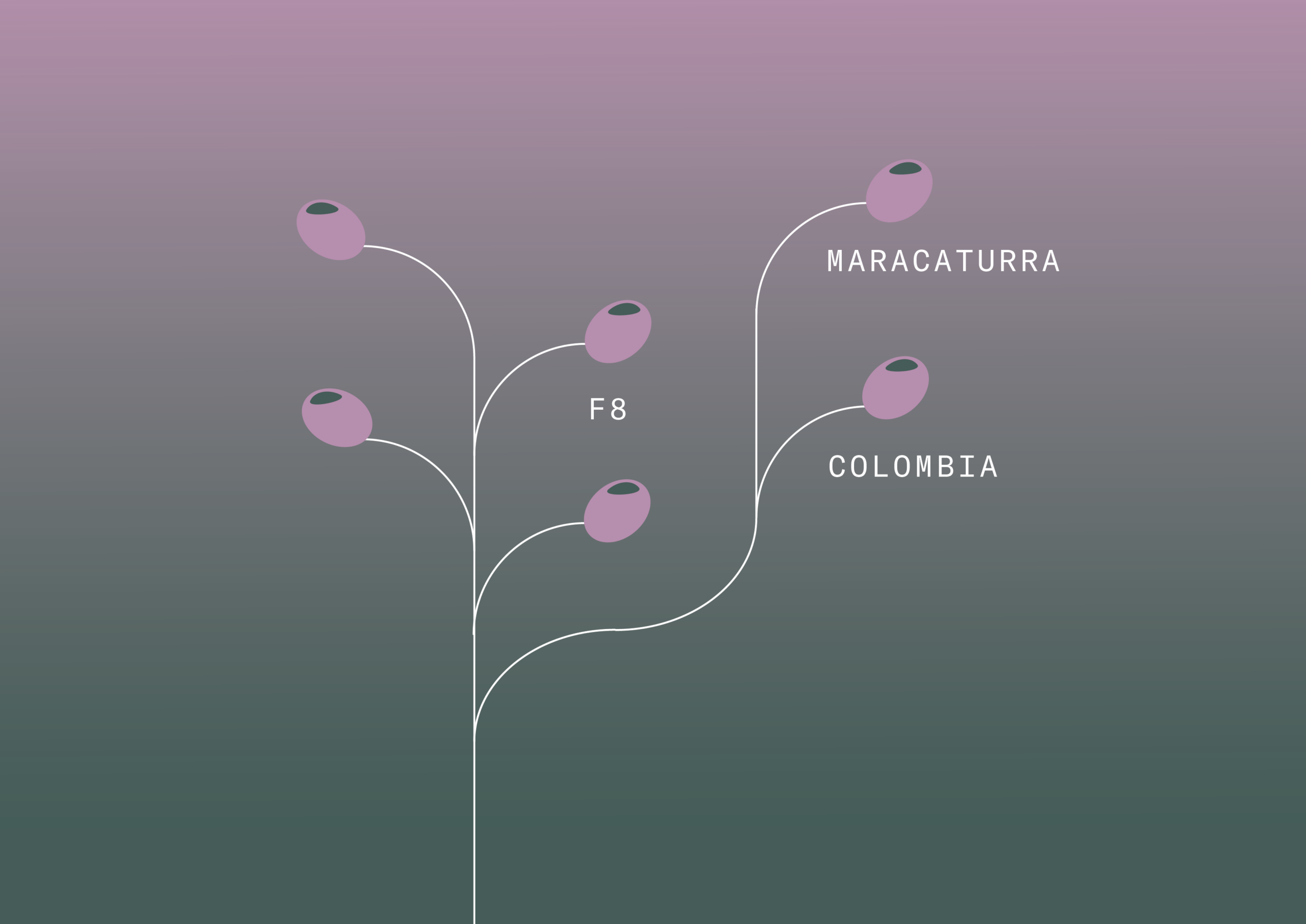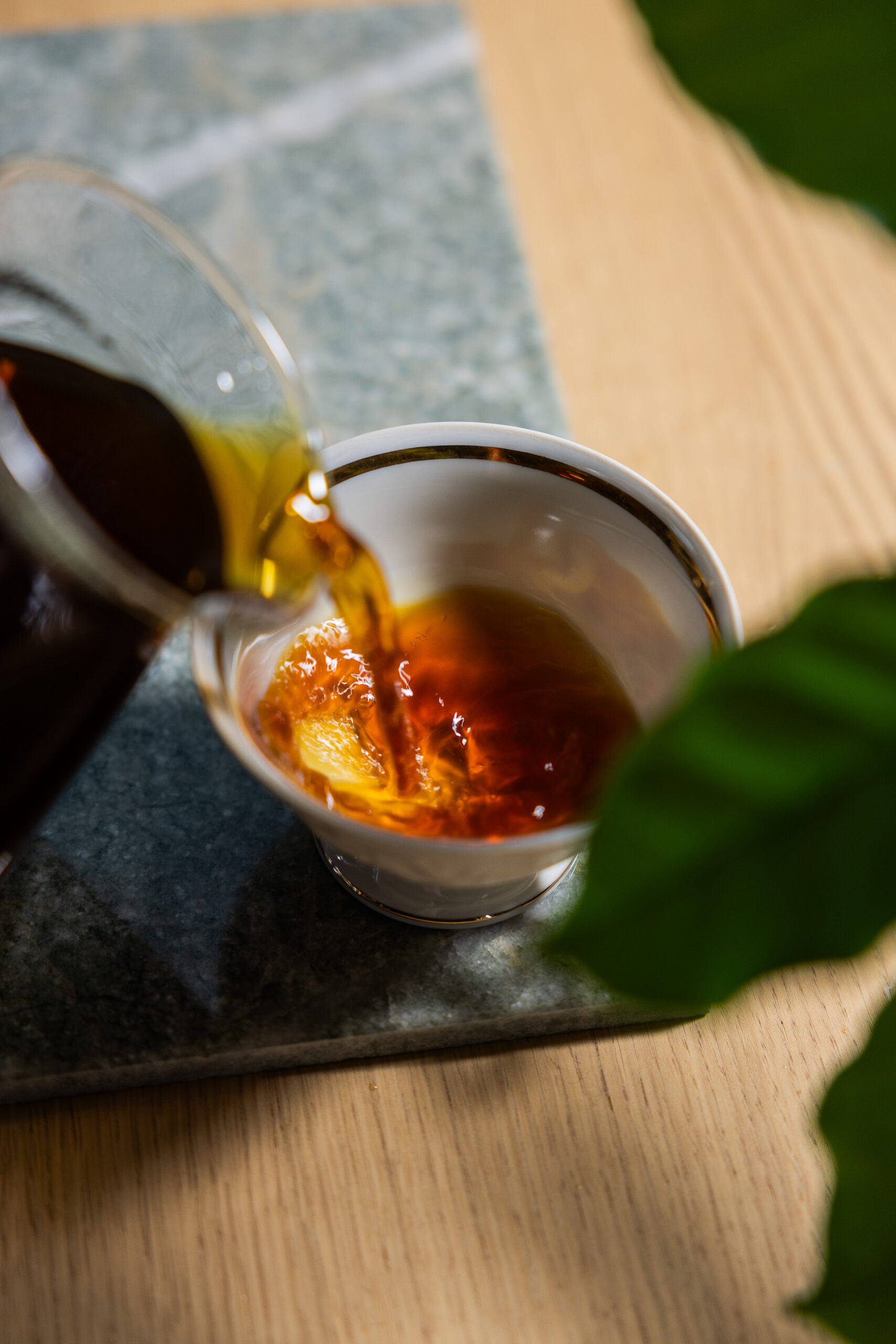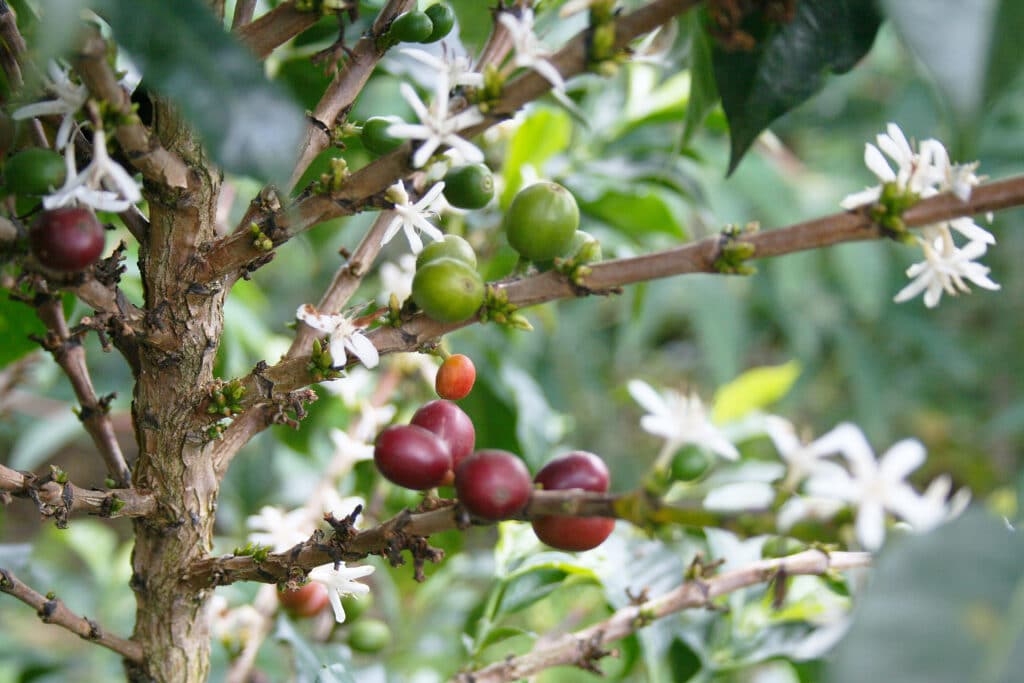
Almost all Ethiopian coffee is grown by small-scale farmers who have a few coffee plants growing outside their homes. Just like in a Norwegian apple orchard, several varieties of the coffee plant often grow side by side, and unlike in other producer countries, there is in principle no control over which species are grown.
In anticipation of better mapping, which will be a time-consuming and complicated piece of work, the collective term "Ethiopian heirloom" is currently used for most of what is grown in the country. In any case, the coffee world's wildest beans are among the most sought-after on the market.
Why so intense?
The areas where the Arabica plant is believed to originate, the fertile mountainous landscape on the plateaus along the Rift Valley, offer what are considered perfect growing conditions for coffee. The soil, with its characteristic fiery red colour, is rich in nutrients and minerals that are important for the growth of the coffee plant. The same applies to the altitude at which the cultivation areas are located, ranging from 1,500 to just over 2,000 metres above sea level, which helps the coffee berries to develop slowly. For the same reason, high-growing Norwegian strawberries tend to be perceived as sweeter and more flavourful than Belgian strawberries.
Growing conditions similar to those in Ethiopia are also found in the very best growing areas in other producer countries. A natural correlation considering that the Ethiopian coffee plants are, after all, growing in their natural climate and environment.
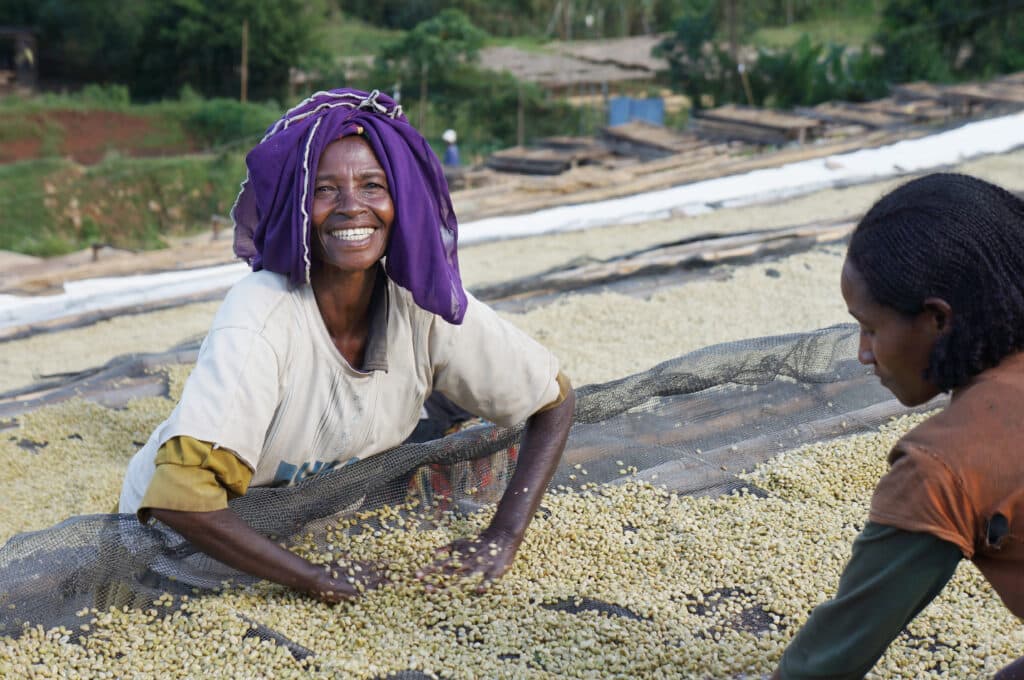
Yes please, both
When it comes to humidity, the weather gods of the Ethiopian highlands are generous. The rainy season lasts from early summer to mid-autumn. At the same time, this period offers plenty of sunny spells. The high altitude means that the temperature rarely reaches 30 degrees centigrade, but at the same time contributes to the intense heat of the sun.
It is this balance between sufficient heat and humidity that allows coffee plants to thrive in mountainous areas near the equator. Again, this can be traced back to the origin of the coffee plant and the growing conditions in the highlands of south-west Ethiopia.
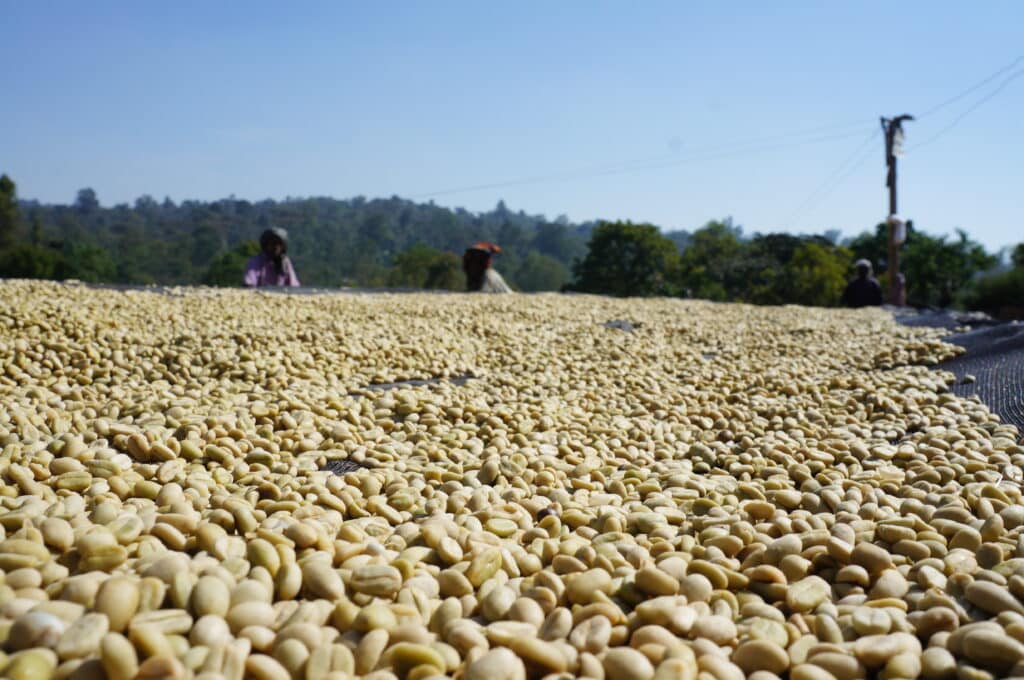
Bringing out the best flavours in the coffee berry
Just as coffee plants in Ethiopia have close ties to their origins, Ethiopian coffee farmers are true to their ancient agricultural traditions. The combination of low access to resources and naturally adapted plants means that the use of pesticides and artificial fertilisers is virtually nil. The coffee plants are cultivated according to natural, organic principles, and production per coffee tree is considerably lower than in other producer countries.
The processing of the coffee berries, which often takes place in large co-operatives, is perhaps the most critical factor in maintaining the potentially unique quality of the raw material. The two methods commonly used in Ethiopia, berry drying and wet processing, produce contradictory results, but the common denominator is a cup filled with distinctive flavours. Where the typical berry-dried Ethiopian coffee is characterised by an extreme fruitiness, often with flavour associations to fully ripe berries, a wet-processed variant will be considerably cleaner, usually with intense acidity and complex, floral notes.
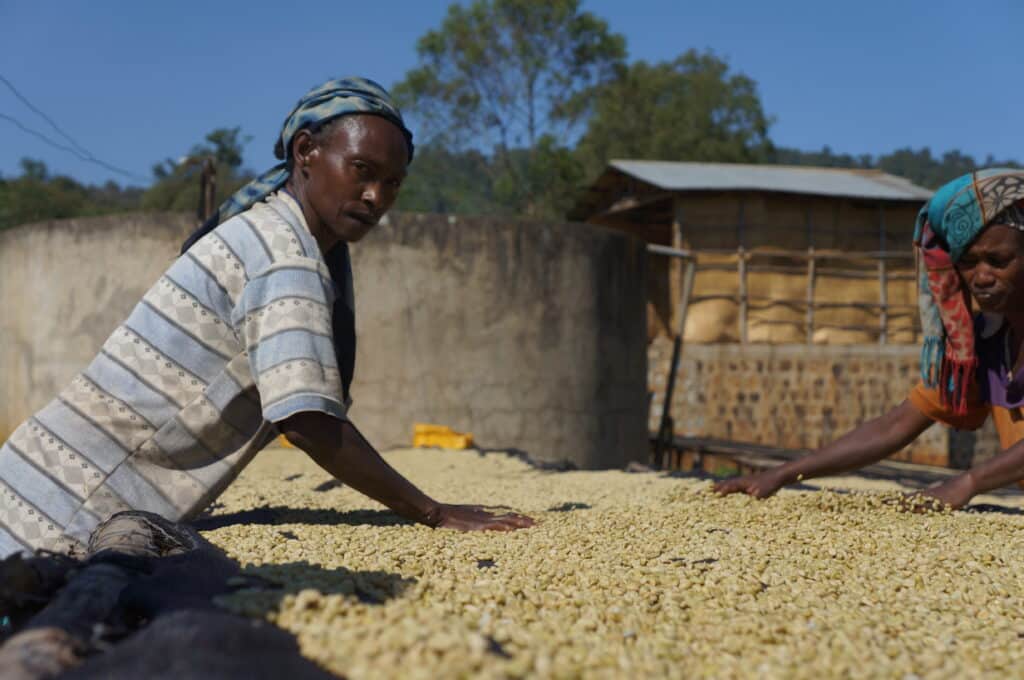
Discover the flavours of summer
For most of us, coffee itself is a frequently used flavour reference, but we rarely reflect on what flavours we find in our coffee cup. Quite simply, coffee tastes like coffee, and it's usually the chocolate-sweet, nutty variety from Brazil that we're referring to. However, the world of coffee offers a repertoire of flavours that is far from limited to what we associate with classic coffee taste. And when it comes to flavour richness and intensity, Ethiopian coffee is possibly the black brew's foremost representative.
The taste of the characteristic citrus fruit Bergamot, which most of us recognise from the tea classic Earl Grey, is often discovered here. Just as the fresh acidity in the cup can be associated with the one we recognise from the berries on the currant bush in the garden. Or something completely different. That's exactly what makes coffee exciting. Try out different brewing methods and discover how the flavours in the cup change character as the temperature drops.
At the end of the day, it's your own flavour preferences that determine which ones you find. The intense and summery qualities of Ethiopian coffee make it as exciting to taste as it is complicated to get to the bottom of the flavour.
